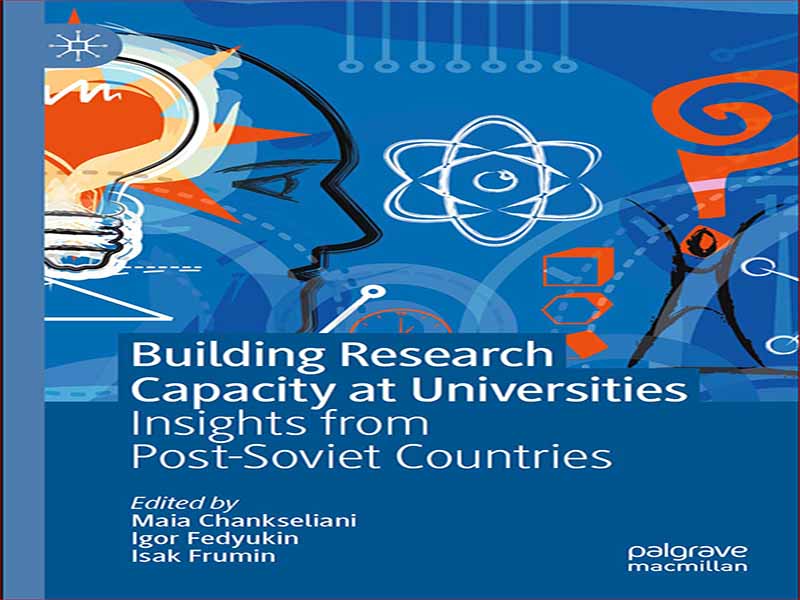- عنوان کتاب: Building Research Capacity at Universities
- نویسنده: Maia Chankseliani
- حوزه: دانشگاه
- سال انتشار: 2022
- تعداد صفحه: 336
- زبان اصلی: انگلیسی
- نوع فایل: pdf
- حجم فایل: 5.79 مگابایت
این جلد به عنوان مشارکت جمعی در بحث های جاری در مورد توسعه ظرفیت پژوهشی دانشگاه تهیه شده است. فصلهای این جلد، مطالعات موردی تجربی از کشورهای شوروی سابق را ارائه میکند که تاریخ، سیاستها و شیوههای مشترک آموزش عالی مشترک دارند. این اشتراکات تمرکز منطقه ای را معنادار و از نظر تحلیلی معتبر می کند. مطالعات موردی مبتنی بر تجربی در مورد توسعه ظرفیت تحقیقاتی در دانشگاههای کشورهای شوروی سابق، بینشهای مهمی را در مورد مکانیسمهای تغییر نهادی و سیاستی در آموزش عالی به طور کلی ارائه میدهد. جامعه جهانی شاهد گسترش تحقیقات دانشگاهی بوده است. مؤسسات آموزش عالی درگیر بهبود درک ما از زندگی، ارائه آموزش مبتنی بر تحقیق و حمایت از توسعه پایدار هستند (Chankseliani & McCowan، 2021). تولید دانش جدید به عنوان رسالت اساسی دانشگاه ها شناخته شده است. با این حال، در بسیاری از کشورها، از جمله آلمان که زادگاه دانشگاه تحقیقاتی است، بخش بزرگ تحقیقات عمومی از نظر نهادی از آموزش عالی جدا است (دوسدال و همکاران، 2020). محبوبیت دانشگاه های تحقیقاتی ناشی از تجربه موفق دانشگاه های آمریکایی است. در ایالات متحده، یک دانشگاه تحقیقاتی به جای یک هنجار استثنا باقی می ماند و تنها حدود 200 دانشگاه از 3500 دانشگاه و کالج به عنوان تولید کننده دانش در نظر گرفته می شوند (کاستلز، 2017). ایجاد ظرفیت پژوهشی در بخش دانشگاه به یک اولویت ملی در بسیاری از کشورها تبدیل شده است. مطالعات اخیر نشان میدهد که حتی منابع قابل توجه و ساخت و ساز تهاجمی دانشگاههای تحقیقاتی جدید همیشه منجر به رشد سریع ظرفیت پژوهشی و بهرهوری پژوهشی نمیشود (Altbach et al., 2018). اتحاد جماهیر شوروی یک مورد شدید از جدایی سازمانی آموزش عالی و تحقیقات را نشان داد. بخش عمده ای از تحقیقات توسط موسسات آکادمی علوم اتحاد جماهیر شوروی و آکادمی های جمهوری، و همچنین، در سمت کاربردی، توسط موسسات تحقیقاتی صنعت انجام شد. قبلاً تعدادی از مؤسسات آموزش عالی پژوهش فشرده وجود داشت که به عنوان استثناء در نظر گرفته می شدند، و بسیاری از محققین منفرد از آکادمی علوم به طور معمول به عنوان استاد دانشگاه مشاغل پاره وقت داشتند. با این حال، دانشگاه ها نقش کوچکی در توسعه علم شوروی ایفا کردند، زیرا موسسات آموزش عالی بیشتر به عنوان موسسات آموزشی در نظر گرفته می شدند. این جلد با فصلی آغاز میشود که مروری انتقادی از جدایی بین آموزش عالی و تحقیق در اتحاد جماهیر شوروی ارائه میکند و به عنوان نقطه عزیمت مشترک برای مطالعات موردی کشورها عمل میکند.
This volume was prepared as a collective contribution to the current debates on developing university research capacity. The chapters in this volume offer empirical case studies from the former Soviet countries which share a common history, common policies and practices of higher education. These commonalities make the regional focus meaningful and analytically valid. Empirically grounded case studies on developing research capacity at universities in the former Soviet countries offer important insights into mechanisms of institutional and policy change in higher education more generally.
Global society has seen a proliferation of university-based research. Higher education institutions are engaged in improving our understand¬ing of life, offering research-informed teaching, and supporting sustain-able development (Chankseliani & McCowan, 2021). Generation of new knowledge has been recognised as a fundamental mission of univer¬sities. Yet, in many countries, including Germany which is the birthplace of the research university, the large public research sector remains institu¬tionally separate from higher education (Dusdal et al., 2020). The popu¬larity of research universities stems from the successful experience of American universities; in the United States, a research university remains an exception rather than the norm with only about 200 out of 3500 uni¬versities and colleges being considered as knowledge producers (Castells, 2017). Building research capacity within the university sector has become a national priority in many countries. Recent studies show that even sig¬nificant resources and aggressive construction of new research universities do not always lead to a fast growth in research capacity and research pro¬ductivity (Altbach et al., 2018).
The Soviet Union represented an extreme case of the organisational separation of higher education and research. The bulk of research was carried out by the institutes of the USSR Academy of Sciences and the republican academies, as well as, on the applied side, by the industry research institutes. There used to exist a number of research-intensive higher education institutions which were seen as exceptions, and many individual researchers from the Academy of Sciences routinely held part-time jobs as university professors. Yet, universities played a minor role in the development of the Soviet science, as higher education institutions were mostly thought of as teaching establishments. This volume opens with a chapter that offers a critical overview of the separation between higher education and research in the Soviet Union and serves as a com¬mon point of departure for individual country case studies.
این کتاب را میتوانید از لینک زیر بصورت رایگان دانلود کنید:


































نظرات کاربران